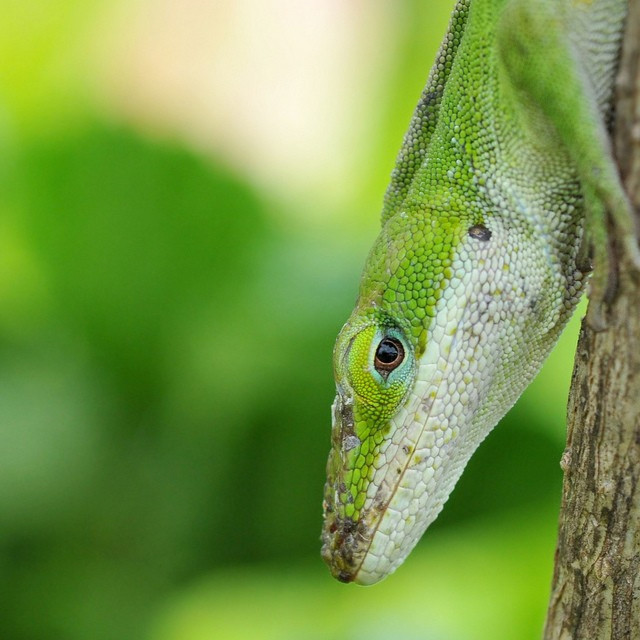First Lizard Genome Sequenced Will Unveil Secrets of Evolution: Scientists

A green anole lizard, named Anolis carolinensis, is the first non-avian reptile to have its genome sequenced, and may unveil the secrets of evolutionary process of animals and humans.
Researchers from the Broad Institute of MIT and Harvard in Cambridge, Massachusetts collaborated their efforts in sequencing the genome of the green anole, a five-inch sized tree dweller from the southeastern U.S.
They further hunted down and investigated egg-protein genes in the lizard, comparing it with the genes in chicken eggs. Among amniotes, egg proteins were found to have likely evolved more rapidly than other proteins. The high mutation rate may have played a role in the evolution of the egg, said the Nature, where the paper was published on Wednesday.
This fills out a clade that has been completely ignored before, says the study's lead author Jessica Alföldi.
Unlike their amphibian and fish cousins, reptiles do not lay eggs in water, qualifying the genome of the green anole lizard for a good material to compare with that of other animals.
Around 280 million years ago, humans, birds and reptiles diverged from animals that lay eggs in water. How land reproducing mammals evolved away from laying eggs remained a mystery for researchers, but the lizard genome seems to hold a key to solve the puzzle.
Among the findings, the researchers found that similar features seen in different species are the results of convergent evolution instead of inter-island migration.
The lizard genome makes powerful tools to study natural selection and evolutionary change at the genetic level. It will also help establish maternity and paternity to quantify reproductive success, and thus determine whether some individuals produce more descendants than others, said National Geographic.
Anoles are rich in ecology and morphology and have just the right amount of diversity to make them interesting yet tractable to study, Jonathan Losos, one of the paper's authors, said in a statement.
But a big stumbling block in studying them has been that they have not been great organisms for classical genetic study. The genome is going to revolutionize our ability to study that aspect of their evolutionary diversification.
To better use the rich information the lizard genome offers, more sequences may be needed, suggested Vertebrate biologist and palaeontologist Susan Evans at University College London.
It will be illuminating to compare it with more conservative lizards - not to mention representatives of a wider range of reptiles such as snakes, tuatara, crocodiles and turtles, said Evans.
© Copyright IBTimes 2024. All rights reserved.





















